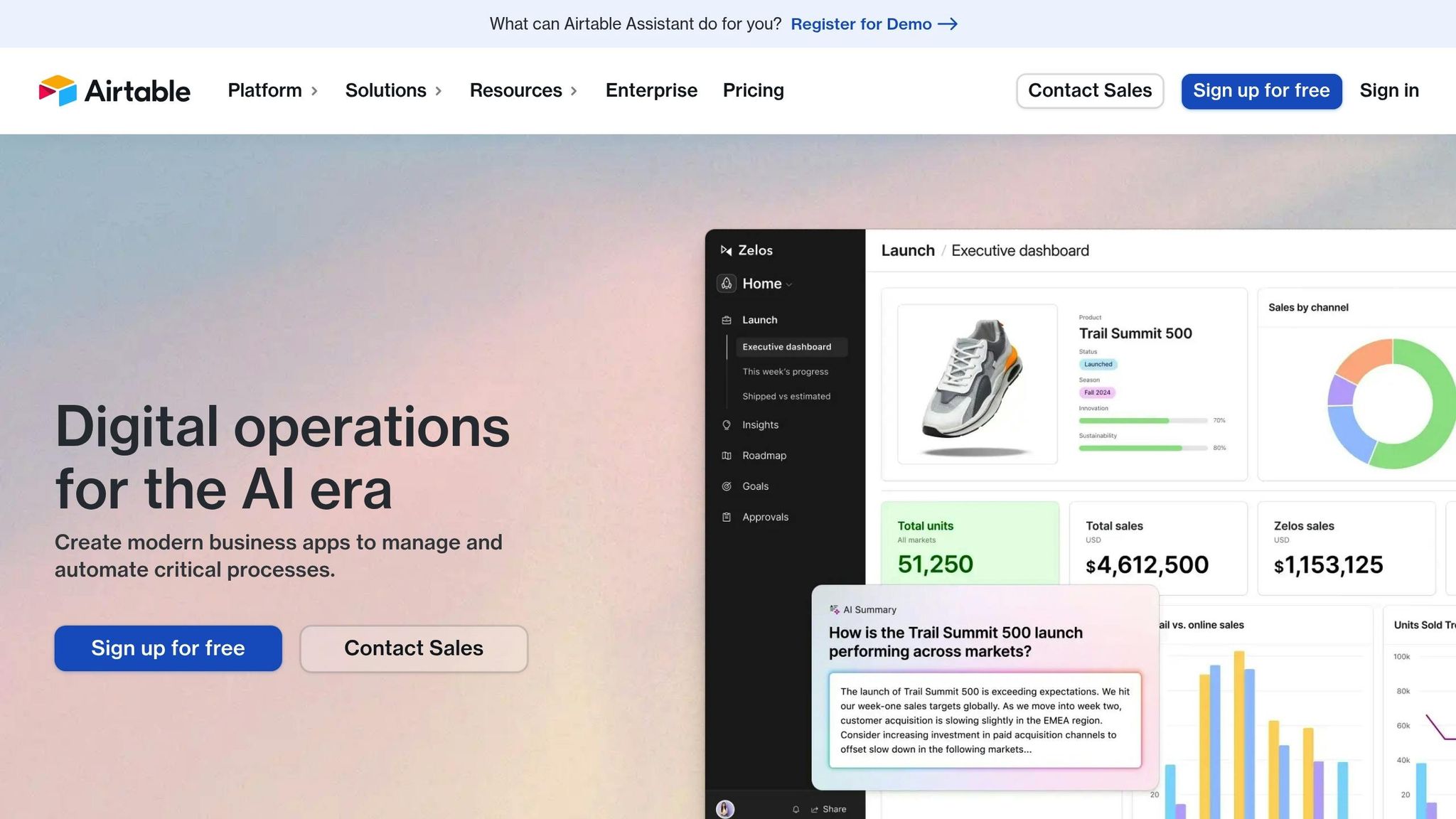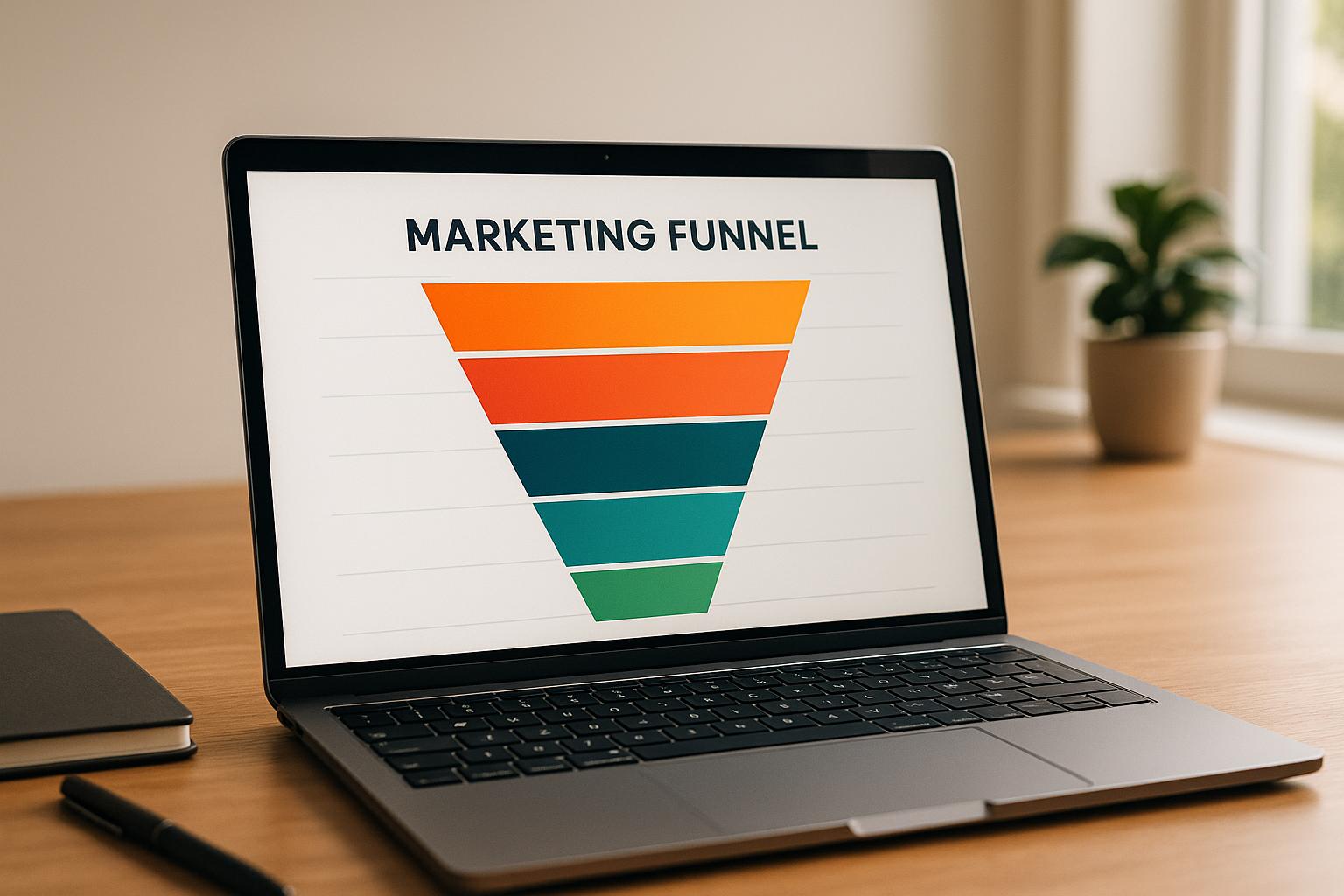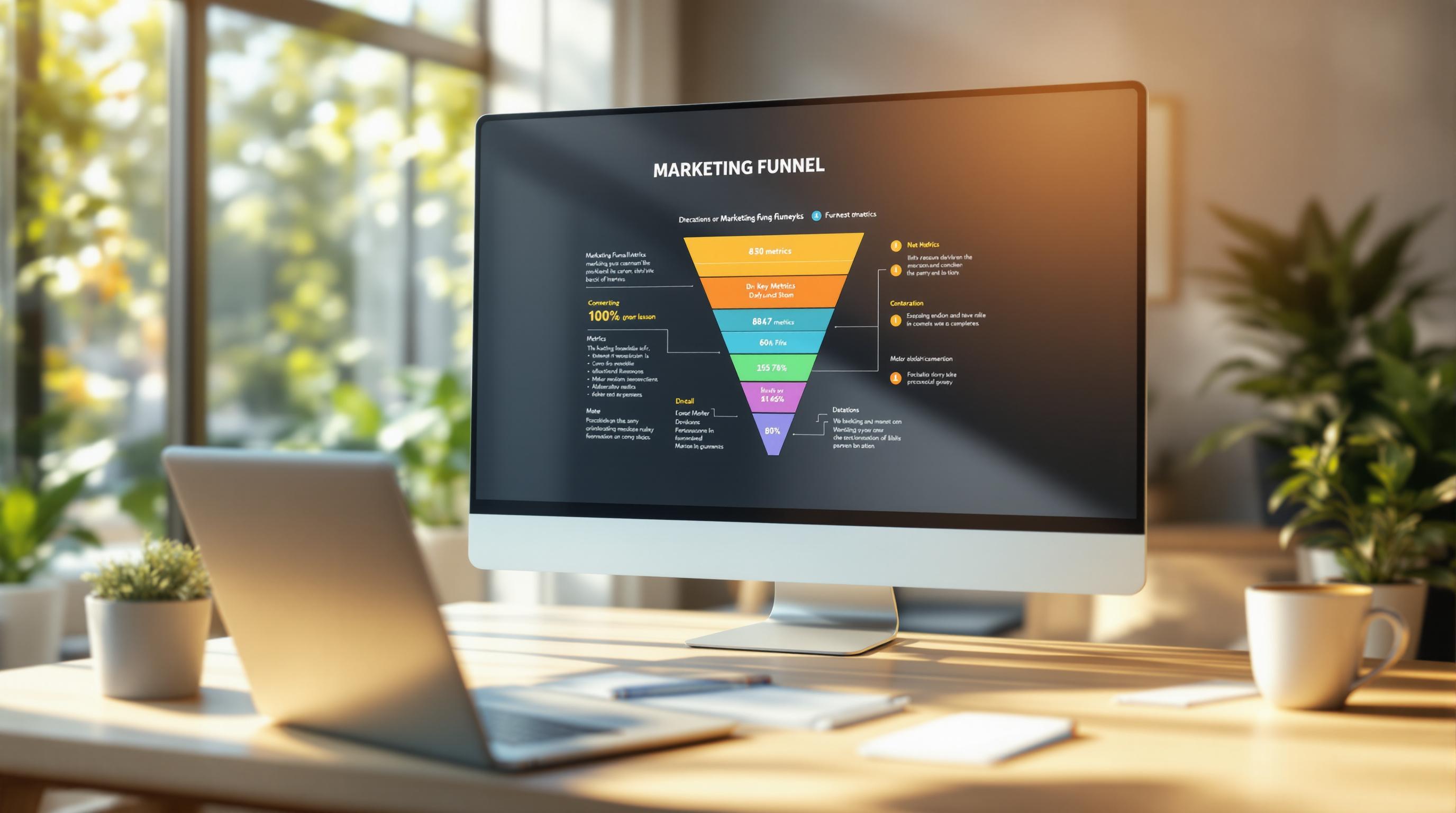- Faster Decisions: Spot issues and trends within minutes, not days.
- Improved Accuracy: Monitor current user actions instead of outdated reports.
- Proactive Adjustments: Tweak strategies in real time to reduce drop-offs.
- Team Collaboration: Align marketing, sales, and support teams with shared data.
Key Metrics to Track:
- Conversion Rates: See where users drop off at each stage.
- Exit Points: Identify and fix issues like broken links or confusing navigation.
- Timing Delays: Address bottlenecks slowing down the customer journey.
Quick Comparison:
| Aspect | Traditional Analytics | Real-Time Monitoring |
|---|---|---|
| Response Time | Days to weeks | Minutes to hours |
| Data Accuracy | Historical view | Current situation |
| Decision Making | Reactive | Proactive |
| Resource Allocation | Fixed | Dynamic |
With real-time tools, you can act fast, improve conversions, and create a smoother customer experience. Tools like Google Tag Manager and interactive dashboards can help you set up tracking, test changes live, and adjust strategies as needed.
Building a Dashboard for an Online Funnel with Airtable

Key Funnel Metrics That Need Real-Time Data
Using real-time data to monitor your funnel can make all the difference when it comes to improving performance on the fly.
Stage-by-Stage Conversion Tracking
Tracking conversions at every stage of the funnel helps you spot exactly where prospects drop off. If conversion rates take a sudden dip, it's a clear sign that something needs immediate attention.
Here's a breakdown of how real-time monitoring can improve each stage of the funnel:
| Funnel Stage | Key Metrics to Track | Impact on Performance |
|---|---|---|
| Awareness | Traffic sources, bounce rates | Fine-tune ad spend and expand content reach |
| Interest | Page engagement, time on site | Make content more relevant and engaging |
| Consideration | Form completions, demo requests | Strengthen lead qualification efforts |
| Decision | Proposal views, checkout starts | Address cart abandonment issues |
| Action | Purchase completion rate | Boost final conversions |
By keeping a close eye on these metrics, you can detect and address weak points before they derail your funnel.
Exit Points Analysis
Exit points are where users leave the funnel, and identifying them is crucial for maintaining strong conversion rates. Real-time analysis of these points allows teams to act fast and fix problems like broken links or confusing navigation. For example, a B2B company quickly resolved a spike in exits at the proposal stage after discovering a broken download link.
Fixing exit points as they arise ensures a smoother journey for prospects and keeps them moving forward.
Time Between Stages
While conversion rates and exit points tell you where prospects drop off, timing metrics reveal how quickly they move through the funnel. Real-time data can highlight delays or bottlenecks that slow down the customer journey, giving you the chance to fix them right away.
Key timing factors to monitor include:
- Response times: How quickly your team follows up with leads
- Content engagement: How well your funnel content resonates with users
- Decision delays: Points where prospects hesitate or stall
By addressing these timing issues, you can shorten the overall conversion cycle. This allows sales teams to focus on the most engaged prospects and gives marketing teams the data they need to fine-tune campaigns in real time.
For businesses looking to implement these strategies, the Marketing Funnels Directory offers tools and resources tailored to tracking these critical metrics, helping you build a system that works for your specific funnel goals.
Setting Up Real-Time Funnel Tracking
Selecting Data Tracking Tools
To effectively monitor your funnel in real time, start with an analytics platform that offers real-time data processing, customizable event tracking, and interactive visualizations. The best tools will integrate effortlessly with the marketing systems you already use.
| Feature Category | Key Capabilities | Benefits for Tracking |
|---|---|---|
| Data Processing | Real-time processing | Provides immediate insights |
| Event Tracking | Custom events | Monitors specific funnel stages |
| Visualization | Interactive dashboards | Displays data clearly |
| Integration | API connectivity | Combines data seamlessly |
Once you’ve chosen your tools, set them up to capture every step of the funnel journey.
Installing Tracking Systems
After selecting your tracking tool, the next step is configuring it to capture data accurately and in real time. Proper setup ensures you’re collecting the right information from the start.
-
Install Base Tracking Code
Add the Google Tag Manager (GTM) container code directly after the opening<head>tag on every page. This enables core tracking functionalities across your site. -
Configure Event Tracking
Define specific event triggers for actions that are critical to your funnel, such as:- Form submissions
- Button clicks
- Page scroll depth
- Time spent on a page
- File downloads
-
Validate Data Collection
Use GTM’s preview mode to test your event triggers and confirm that they’re firing correctly. This step helps ensure your data collection is accurate from the start.
Building Data Dashboards
Dashboards are your window into the real-time performance of your funnel. A well-designed dashboard keeps things simple and focuses on the metrics that matter most.
| Metric Type | Recommended Display Format | Update Frequency |
|---|---|---|
| Conversion Rates | Line charts | Every 5 minutes |
| Drop-off Points | Heat maps | Continuously updated |
| Traffic Sources | Pie charts | Every 15 minutes |
| User Paths | Flow diagrams | Continuously updated |
For the best results, align your dashboard setup with tools recommended by the Marketing Funnels Directory. This ensures you’re using reliable, industry-standard methods while maintaining accuracy and consistency in your data tracking.
sbb-itb-a84ebc4
Making Changes Based on Live Data
Reducing Drop-offs
Real-time data gives you the chance to spot and address sudden spikes in exit rates quickly. For instance, if your checkout page starts seeing an unusual rise in abandonment, it might be time to dig into potential technical glitches or user experience hiccups right away.
Preventing drop-offs often relies on predictive analytics. Modern tracking tools can pinpoint risky behaviors like these:
| Risk Behavior | Immediate Action | Expected Outcome |
|---|---|---|
| Multiple page refreshes | Trigger live chat support | Reduce confusion and friction |
| Extended cart inactivity | Send a personalized discount | Encourage checkout completion |
| Repeated pricing page visits | Display social proof | Boost buyer confidence |
Live Testing Methods
Real-time testing lets you fine-tune your funnel on the fly without waiting for lengthy test cycles. Methods like A/B testing and multivariate testing can reveal which tweaks resonate most with users.
When running live tests, focus on key conversion points and monitor metrics that matter, such as:
| Test Element | Key Metric |
|---|---|
| Call-to-Action Buttons | Click-through rate |
| Form Fields | Completion rate |
| Payment Options | Impact on conversion |
| Page Load Speed | Bounce rate correlation |
These real-time insights allow you to continuously refine and improve the user experience.
Custom User Paths
Using insights from live testing, you can personalize user journeys to better align with individual behaviors. Dynamic personalization makes the funnel more engaging by responding to specific user actions. For example, if analytics reveal a user is spending extra time comparing features, you can:
- Highlight case studies that focus on those features
- Show testimonials relevant to their interests
- Adjust content depth based on their engagement level
- Provide tailored support resources
The Marketing Funnels Directory offers tools designed to help you implement these real-time optimization strategies, enabling you to monitor and adjust your funnel’s performance as user behaviors evolve.
Team Coordination with Real-Time Data
Making quick adjustments to your funnel is crucial, but long-term success relies on coordinated team efforts that drive consistent improvements.
CRM and Sales Team Updates
Connecting real-time funnel data with your CRM system can help identify and act on high-value opportunities faster. For example, CRM platforms can send automated alerts triggered by specific user behaviors, giving your team the ability to prioritize outreach and understand exactly where prospects are in the funnel. This kind of insight allows for more tailored and meaningful conversations with leads. Tools like the Marketing Funnels Directory provide solutions that link funnel analytics with popular CRMs, ensuring teams stay on top of critical engagement signals. This level of integration supports fast, informed decision-making across your marketing operations.
Quick Budget Changes
With real-time data, you can make smarter budget decisions on the fly. By keeping an eye on metrics like cost per lead, conversion rates, and ROI, marketers can quickly shift funds to areas showing the most promise. This kind of flexibility ensures resources are being used where they’ll have the greatest impact.
Problem Response Plan
Having a solid response plan for funnel issues is essential. Set up alert thresholds to catch problems early, and assign specific teams to handle different challenges - whether it's fixing technical glitches, tweaking campaigns, addressing lead flow disruptions, or managing customer support concerns. Documenting each resolution step will not only speed up recovery but also help refine processes for future issues.
Conclusion
Real-time data monitoring has completely changed the way businesses approach funnel optimization. By providing instant insights, it empowers companies to make quick, informed decisions that improve their marketing strategies. Instead of relying on outdated, retrospective analysis, businesses can now adopt a dynamic and proactive approach to better understand user behavior, spot bottlenecks, and fine-tune campaigns as they happen.
Beyond these immediate advantages, real-time data fosters collaboration by breaking down barriers between departments. With shared access to up-to-date analytics, teams can resolve issues faster and work together more effectively, ultimately delivering better customer experiences.
As technology continues to advance, tools driven by AI and machine learning will take live data analysis to the next level. Companies that adopt these innovations and prioritize a data-focused mindset will be better prepared to adapt to market shifts and meet evolving customer demands. Real-time data is no longer just a tool - it's the foundation for managing funnels effectively in today’s fast-paced environment.
For more insights, visit the Marketing Funnels Directory at https://topmarketingfunnels.com.
FAQs
How does real-time data improve marketing funnels by addressing bottlenecks in the customer journey?
Real-time data offers instant insights into your marketing funnel, making it easier to spot and address issues that could disrupt the customer journey. By monitoring user behavior as it occurs, you can quickly identify where potential customers are dropping off - whether it's during ad clicks, landing page visits, or the checkout process.
For instance, say you notice a significant number of users exiting on a particular page. With real-time analytics, you can immediately test and implement fixes, like speeding up page load times or streamlining form fields. This kind of quick action helps create a smoother experience for your audience, increasing conversion rates and improving the overall performance of your funnel.
What are the best tools for real-time funnel tracking, and how can they work with my current marketing systems?
Real-time funnel tracking tools give you a clear view of how your marketing efforts are performing by analyzing customer behavior as it unfolds. Tools like Google Analytics, HubSpot, and Mixpanel are popular choices. They work well with most marketing systems, making it easy to track key metrics such as conversion rates and where users drop off during the customer journey.
To get started, connect these tools to your website, ad platforms, and email marketing systems. Most of them offer built-in integrations or APIs to simplify the setup process. Once everything is linked, you can monitor real-time data to tweak campaigns, refine targeting, and streamline the customer journey. This approach helps businesses make smarter, data-driven decisions to improve their marketing funnels and achieve better results.
How does real-time data improve collaboration between marketing, sales, and support teams?
Real-time data helps bridge the gap between marketing, sales, and support teams by giving everyone access to the latest, most accurate information. When all teams are on the same page, they can align their strategies, respond faster to customer needs, and make smarter decisions based on data.
For instance, marketing teams can tweak campaigns on the fly by analyzing real-time lead behavior. Sales reps can focus their efforts on the most engaged prospects, while support teams can anticipate and address customer issues before they escalate. By eliminating silos and improving communication, real-time data empowers teams to work more effectively and create a smoother, more cohesive experience for customers.


